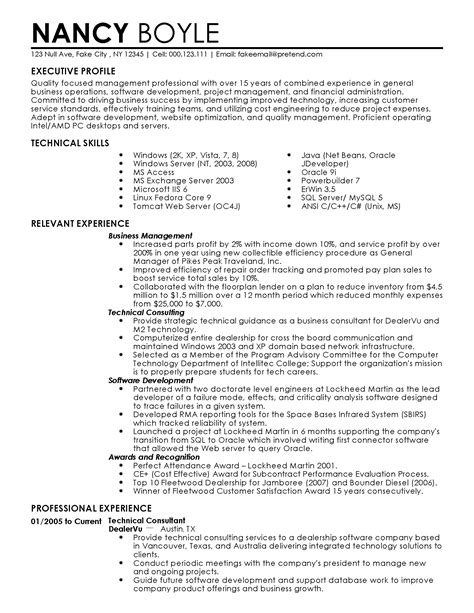Maximize your visibility with relevant skills, past leadership roles, quantifiable achievements, and problem-solving abilities showcased in your profile.Are you applying for a management position and wondering how to make your resume stand out? In today’s competitive job market, showcasing your management experience is crucial. In this blog post, we’ll discuss the key subheadings to include in your resume to highlight your skills and past leadership roles effectively. By following these guidelines, you’ll be able to quantify your achievements and emphasize your problem-solving abilities, giving potential employers a clear understanding of your suitability for the position. Whether you’re a seasoned manager or a recent graduate looking to break into management, these tips will help you craft a resume that effectively communicates your management experience and sets you apart from other applicants. Let’s dive into the details of how to effectively present your management experience on your resume.
Highlight Relevant Skills
When crafting a resume, it’s crucial to highlight your relevant skills in a way that stands out to potential employers. Whether you’re applying for a managerial position or entry-level role, showcasing your abilities is essential. One way to do this is by incorporating a skills section prominently at the top of your resume. This section can include hard and soft skills that are applicable to the job you’re applying for, such as leadership, communication, time management, and technical proficiencies.
Additionally, be sure to provide specific examples of how you’ve used these skills in previous roles. For instance, if you’re highlighting your leadership abilities, you could mention how you successfully managed a team to achieve a specific goal or project. By providing concrete examples, you demonstrate to potential employers that you have the relevant skills needed to excel in the position.
Furthermore, use action verbs and quantifiable results to effectively communicate your skills. Instead of simply stating that you have strong communication skills, provide an example of a successful presentation you delivered or how you effectively mediated a conflict within the workplace. By quantifying your achievements, you give employers a clearer understanding of your abilities and how they can benefit their organization.
Outline Past Leadership Roles
When creating a resume, it’s important to highlight the relevant skills and experiences that make you a strong candidate for a management position. One key aspect to focus on is your past leadership roles. Employers are often looking for candidates who have demonstrated leadership abilities in their previous roles, so outlining your past leadership experiences can be crucial in making your resume stand out.
When outlining your past leadership roles, you should provide specific examples of how you effectively led a team or project. Use action verbs to describe your roles and responsibilities, and quantify your achievements whenever possible. This can help demonstrate your problem-solving abilities and showcase your impact as a leader.
Furthermore, don’t just list your past leadership roles – provide context and explain how your leadership contributed to the success of the team or organization. This can help potential employers understand the value you can bring to their company and can make your resume more impactful.
Quantify Achievements
When crafting your resume, it’s important to quantify your achievements in order to stand out to potential employers. Instead of simply listing your job responsibilities, provide specific numbers and figures to demonstrate the impact of your work. For example, if you implemented a new sales strategy that led to a 20% increase in revenue, be sure to include that information on your resume. Quantifying your achievements not only shows the value you brought to previous roles, but it also gives hiring managers a clear picture of what you can bring to their organization.
Additionally, using quantifiable data helps to make your accomplishments more tangible and impressive. It’s one thing to say that you improved company processes, but it’s much more impactful to say that you streamlined operations, resulting in a 30% decrease in production time. Numbers and statistics provide concrete evidence of your abilities and can make a strong impression on potential employers.
When it comes to quantifying achievements, consider all aspects of your professional experience, not just your most recent role. Whether it’s sales numbers, cost savings, project completion times, or customer satisfaction ratings, there are numerous ways to demonstrate your success in a quantifiable manner. By providing this evidence on your resume, you can set yourself apart from other candidates and show that you have a track record of achieving measurable results.
Emphasize Problem-Solving Abilities
When it comes to crafting a standout resume, it’s essential to emphasize problem-solving abilities. In today’s competitive job market, employers are looking for candidates who can not only complete tasks, but also identify and solve problems that may arise. Highlighting your problem-solving skills on your resume can set you apart from other applicants and demonstrate your ability to think critically and strategically.
One way to emphasize your problem-solving abilities on your resume is to provide specific examples of times when you successfully solved a problem in the workplace. This could include projects where you had to overcome obstacles, instances where you had to think on your feet to resolve an issue, or times when you went above and beyond to find a solution. By quantifying your achievements and showcasing the impact of your problem-solving skills, you can paint a clear picture for potential employers.
In addition to providing examples, it’s also important to use strong action verbs and highlight relevant skills that demonstrate your problem-solving abilities. Words like analyzed, resolved, innovated, and optimized can convey your proactive approach to addressing challenges. By outlining your past leadership roles and demonstrating how you tackled and solved problems, you can show potential employers that you are a valuable asset who can contribute to their company’s success.
